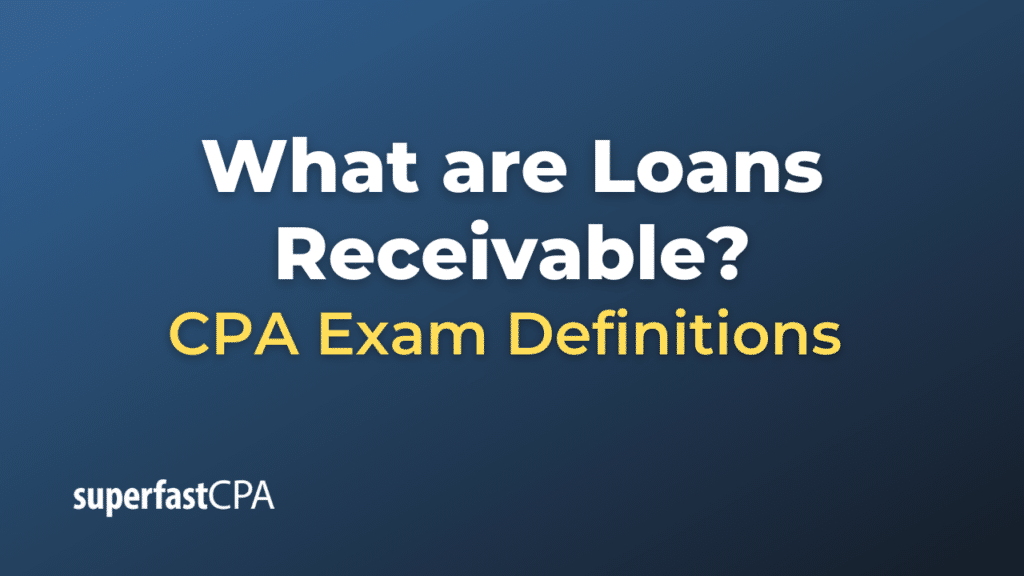Loans Receivable
Loans receivable represent the amount of money that has been lent out by an entity and is expected to be returned by the borrowers. These loans are considered assets from the perspective of the lender, as they generate interest income and the principal is expected to be repaid in the future.
Loans receivable are often found on the balance sheets of banks and other financial institutions, which make loans to customers for purposes like buying homes (mortgages), purchasing vehicles (auto loans), or funding education (student loans). However, non-financial entities can also have loans receivable if they lend money, such as corporations that offer financing to their customers or employees, or investment funds that engage in lending as part of their investment activities.
On the balance sheet, loans receivable are typically classified as current assets if they are expected to be repaid within one year, and as non-current (or long-term) assets if they are expected to be repaid over a longer period.
It’s important to note that loans receivable also carry risk. If a borrower fails to repay a loan, the lender may need to write off that loan as bad debt. To account for this risk, lenders often establish an allowance for loan losses, which is a reserve against potential defaults on loans. The creation of this allowance involves estimating the amount of loans that are likely to default, which is then recognized as an expense in the income statement.
Example of Loans Receivable
Let’s consider an example. Suppose XYZ Bank has provided various loans to its customers, such as home mortgages, car loans, and personal loans. Let’s say the total amount of these loans that are yet to be repaid by the borrowers is $50 million. In this case, XYZ Bank will report $50 million as Loans Receivable on its balance sheet.
Let’s break this down further:
- XYZ Bank has $20 million in home mortgages that will be paid off by borrowers over various terms ranging from 10 to 30 years. This would be considered as long-term loans receivable because they are expected to be repaid over more than one year.
- XYZ Bank has $15 million in car loans that customers will repay over the next 1 to 5 years. Some of these might be considered short-term loans receivable (to be repaid within one year), and others long-term loans receivable (to be repaid over more than one year), depending on the specifics of each loan.
- XYZ Bank has $15 million in personal loans, some of which will be repaid within the year, and others which will be repaid over several years. Again, some of these would be considered short-term loans receivable, and others long-term loans receivable.
To mitigate the risk of potential defaults, XYZ Bank has also created an allowance for loan losses. For instance, if the bank estimates that 1% of its total loans may not be repaid, it would establish an allowance for loan losses of $500,000 ($50 million * 1%).
Remember, these are hypothetical numbers for illustrative purposes. The actual breakdown of a bank’s loans receivable could vary greatly based on factors like the bank’s size, its loan policies, the types of customers it serves, and prevailing economic conditions.













